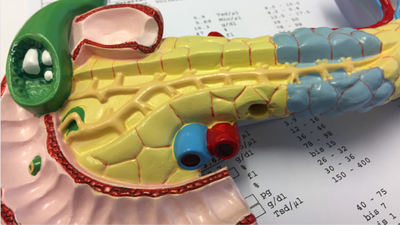- News
- lifestyle
- health-fitness
- health-news
- Gall bladder stones: Early symptoms and complications one should know about
Trending
Gall bladder stones: Early symptoms and complications one should know about
Gallbladder stones, prevalent in India, especially among women, can lead to severe complications like biliary colic, obstructive jaundice, and gallstone pancreatitis. Timely medical intervention, including cholecystectomy, is essential for effective management and prevention of complications.

Gall bladder stone
Some health concerns can silently develop within our bodies, often going unnoticed until they cause significant harm. One such silent threat is gallbladder stones, a condition that affects millions of people worldwide. In India, about 6% of people suffer from gallstones, with a higher prevalence in women. Despite their seemingly innocuous nature, untreated gallbladder stones can lead to severe complications, highlighting the importance of timely medical intervention.
Gallbladder stones, also known as gallstones, are hardened deposits that form in the gallbladder, which is a small organ beneath the liver. These stones can vary in size and composition, ranging from tiny particles to larger, solid stones. While some individuals may have gallstones without experiencing any symptoms, others may face excruciating pain and complications.
· Biliary colic: One of the primary perils of untreated gallbladder stones is the potential for a gall bladder attack or a “biliary colic”. When a stone blocks the duct that releases bile from the gallbladder, it can lead to intense pain in the abdomen, known as biliary colic. This pain can be debilitating and may require emergency medical attention. Moreover, repeated gallbladder attacks can damage the organ and increase the risk of infections in the gall bladder (acute cholecystitis) and the bile duct (cholangitis). Unlike common perception, small stones can be more dangerous than bigger stones in this regard as they have a higher propensity to slip out and cause obstruction of the bile duct.
· Obstructive jaundice: Blockage of the bile duct can cause obstructive jaundice, a condition characterized by yellowing of the skin and eyes, indicating liver dysfunction. Chronic bile duct obstruction can also contribute to liver damage and increase the risk of complications such as liver cirrhosis.
Despite these risks, many individuals harbour concerns about the removal of their gallbladder, particularly those without apparent symptoms. As a laparoscopic surgeon specializing in gallstone disease, I often encounter patients who are worried about the impact of the removal of an organ on their bodies. They question the necessity of surgery when there are no overt symptoms and sometimes turn to alternative therapies in an attempt to manage their condition.
It's essential to address these concerns and misconceptions. While the gallbladder plays a role in storing and releasing bile to aid digestion, its absence typically does not cause any major digestive issues. The decision to remove a diseased gallbladder is based on the potential risks of untreated gallstones, which can lead to severe pain, inflammation, and life-threatening complications such as gallstone pancreatitis.
As a surgeon, I emphasize the importance of individualized care and informed decision-making. For patients with multiple gallstones, symptomatic gallstones or those at risk of complications, surgical removal of the gallbladder (cholecystectomy) is often the most effective and safest treatment. It's worth noting that symptoms related to gallstones can manifest unexpectedly, and these stones have the potential to lead to complications at any juncture. Laparoscopic cholecystectomy, a minimally invasive procedure, offers quicker recovery times and minimal scarring compared to traditional open surgery.
It's crucial for individuals experiencing symptoms such as abdominal pain, nausea, vomiting, and jaundice to seek medical evaluation promptly. Diagnosis typically involves imaging tests such as blood work, ultrasound, CT scans, or MRIs to visualize the gallbladder and detect the presence of stones.
In conclusion, untreated gallbladder stones pose significant risks to health and well-being. Understanding the importance of timely intervention, dispelling misconceptions about gallbladder removal, and seeking appropriate medical care are essential steps in managing these conditions effectively. By addressing gallstones proactively, individuals can prevent complications and improve their quality of life.
Authored by: Dr. Aparna Govil Bhasker, Consultant Bariatric and Laparoscopic Surgeon, MetaHeal- Laparoscopy and Bariatric Surgery Center, Mumbai, Saifee, Apollo and Namaha Hospitals, Mumbai
Gallbladder stones, also known as gallstones, are hardened deposits that form in the gallbladder, which is a small organ beneath the liver. These stones can vary in size and composition, ranging from tiny particles to larger, solid stones. While some individuals may have gallstones without experiencing any symptoms, others may face excruciating pain and complications.
· Biliary colic: One of the primary perils of untreated gallbladder stones is the potential for a gall bladder attack or a “biliary colic”. When a stone blocks the duct that releases bile from the gallbladder, it can lead to intense pain in the abdomen, known as biliary colic. This pain can be debilitating and may require emergency medical attention. Moreover, repeated gallbladder attacks can damage the organ and increase the risk of infections in the gall bladder (acute cholecystitis) and the bile duct (cholangitis). Unlike common perception, small stones can be more dangerous than bigger stones in this regard as they have a higher propensity to slip out and cause obstruction of the bile duct.
· Obstructive jaundice: Blockage of the bile duct can cause obstructive jaundice, a condition characterized by yellowing of the skin and eyes, indicating liver dysfunction. Chronic bile duct obstruction can also contribute to liver damage and increase the risk of complications such as liver cirrhosis.
· Acute gallstone pancreatitis: Beyond the immediate discomfort, untreated gallstones can pave the way for more serious health issues, including gallstone pancreatitis. Gallstone pancreatitis occurs when a gallstone blocks the pancreatic duct, leading to inflammation of the pancreas. This condition can cause severe abdominal pain, nausea, vomiting, and in severe cases, organ failure and can be potentially life-threatening. Gallstone pancreatitis requires immediate medical attention and may necessitate hospitalization for intensive care and treatment.
Despite these risks, many individuals harbour concerns about the removal of their gallbladder, particularly those without apparent symptoms. As a laparoscopic surgeon specializing in gallstone disease, I often encounter patients who are worried about the impact of the removal of an organ on their bodies. They question the necessity of surgery when there are no overt symptoms and sometimes turn to alternative therapies in an attempt to manage their condition.
It's essential to address these concerns and misconceptions. While the gallbladder plays a role in storing and releasing bile to aid digestion, its absence typically does not cause any major digestive issues. The decision to remove a diseased gallbladder is based on the potential risks of untreated gallstones, which can lead to severe pain, inflammation, and life-threatening complications such as gallstone pancreatitis.
As a surgeon, I emphasize the importance of individualized care and informed decision-making. For patients with multiple gallstones, symptomatic gallstones or those at risk of complications, surgical removal of the gallbladder (cholecystectomy) is often the most effective and safest treatment. It's worth noting that symptoms related to gallstones can manifest unexpectedly, and these stones have the potential to lead to complications at any juncture. Laparoscopic cholecystectomy, a minimally invasive procedure, offers quicker recovery times and minimal scarring compared to traditional open surgery.
It's crucial for individuals experiencing symptoms such as abdominal pain, nausea, vomiting, and jaundice to seek medical evaluation promptly. Diagnosis typically involves imaging tests such as blood work, ultrasound, CT scans, or MRIs to visualize the gallbladder and detect the presence of stones.
In conclusion, untreated gallbladder stones pose significant risks to health and well-being. Understanding the importance of timely intervention, dispelling misconceptions about gallbladder removal, and seeking appropriate medical care are essential steps in managing these conditions effectively. By addressing gallstones proactively, individuals can prevent complications and improve their quality of life.
Authored by: Dr. Aparna Govil Bhasker, Consultant Bariatric and Laparoscopic Surgeon, MetaHeal- Laparoscopy and Bariatric Surgery Center, Mumbai, Saifee, Apollo and Namaha Hospitals, Mumbai
Sitting for prolonged hours at work: Beware of these side affects!
End of Article
FOLLOW US ON SOCIAL MEDIA










